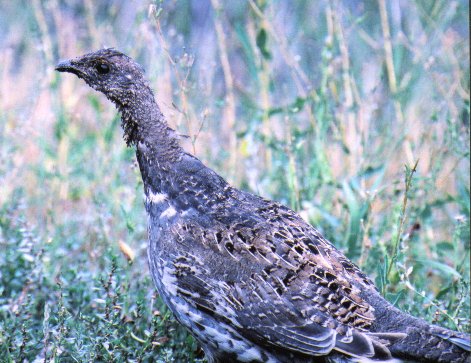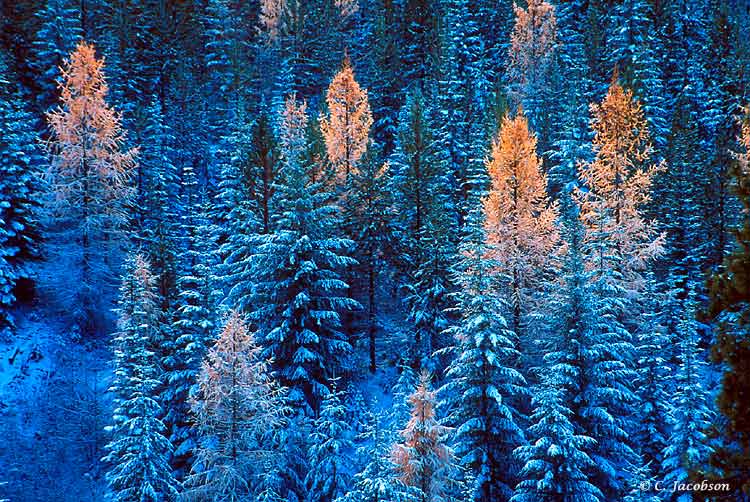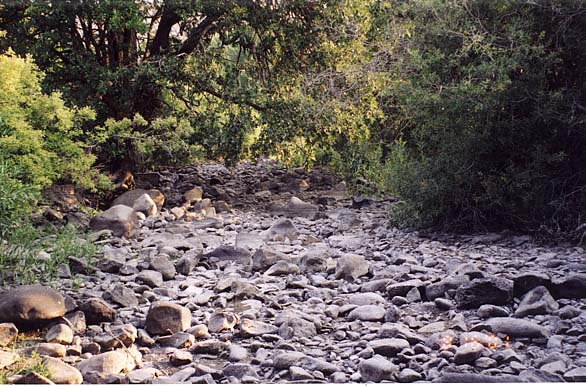
Blue Grouse common within the Swauk Creek Valley.

Flying Squirrels are also very common within the Swuak Creek Valley.

Larch trees in late fall. Different from Douglas Fir, Larch needles
change color seasonally.

Swuak Creek During the drought of 2001.



